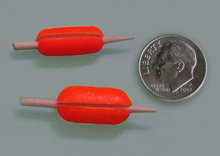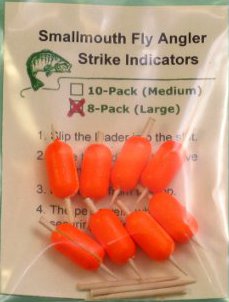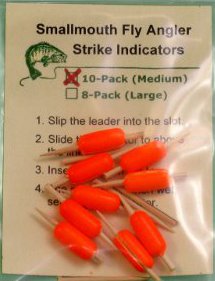Strike Detection with an Indicator

The indicator only twitched slightly when this fish bit.
Naturally, a strike indicator is only as good as the person watching it. Trout and steelhead anglers who do a lot of nymphing quickly learn to read their smallmouth indicators. But unfortunately, guys without those angling backgrounds often have trouble detecting light bites. In fact, I’ve had plenty of guiding clients and school students who only noticed a small percent of the strikes that I saw.
The main reason for poor strike detection is that too many anglers expect the indicator to do something dramatic, like zoom across river, every time a fish takes their fly. In reality, with a typical pull-and-pause retrieve, many bites occur on the pause, so the indicator only momentarily twitches or dips or quivers slightly.
Here’s how to detect these light bites: Closely watch how the indicator performs during several normal retrieves. Then whenever the indicator does something different than that, assume that it’s a fish taking the fly. Of course, not every time your indicator acts “different” will it be a strike. But sometimes it will be a fish, and as you get better at reading your indicator, less of them will be false strikes and more will be biting bronzebacks. Sweet.
 If you fish subsurface without a strike indicator, you’re throwing away half your strikes. Finally, here is a highly visible strike indicator that’s easy to cast and will stay on your leader. Unlike other small indicators that break or fall off, or bulky bobber-style indicators, our Smallmouth Fly Angler brand indicators really work. Peg one at your line and leader junction, and start catching more fish.
If you fish subsurface without a strike indicator, you’re throwing away half your strikes. Finally, here is a highly visible strike indicator that’s easy to cast and will stay on your leader. Unlike other small indicators that break or fall off, or bulky bobber-style indicators, our Smallmouth Fly Angler brand indicators really work. Peg one at your line and leader junction, and start catching more fish.








Sam Lacina –
Tim,
Wow! Did those strike indicators make a difference. The fish wanted it slow and low, no way I would have detected the bite.
Thanks for sharing.
Sam Lacina